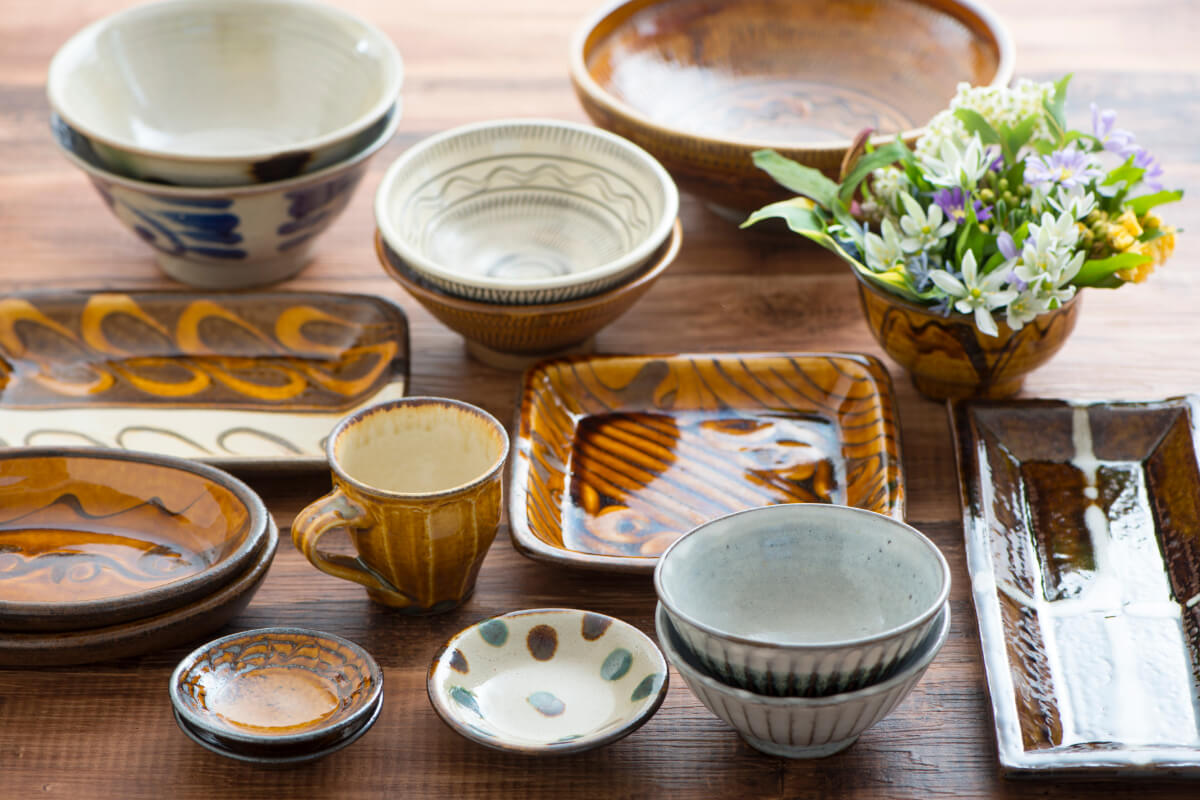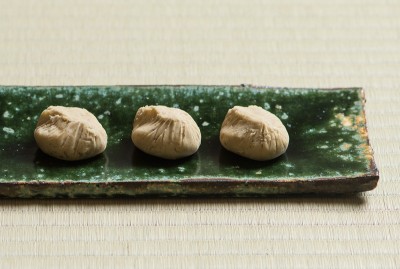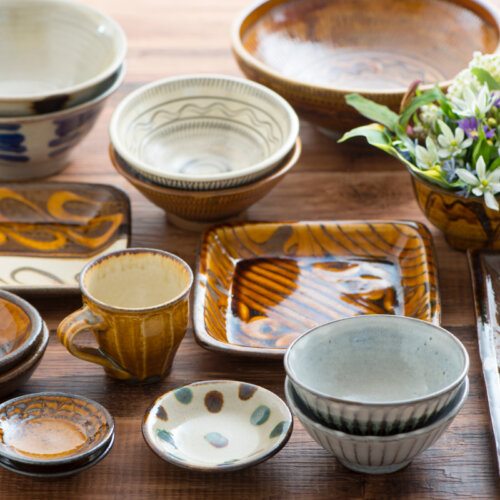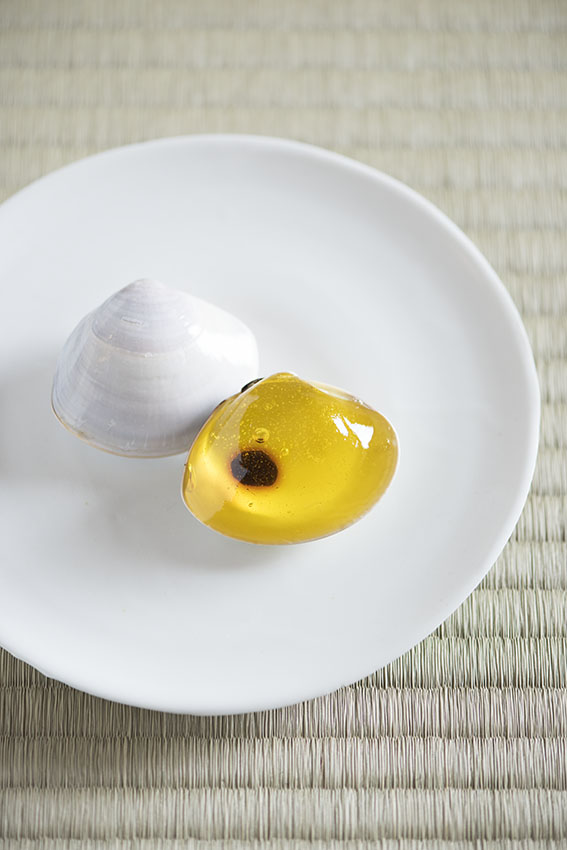Chapter 3: Confectionery and pottery that both came into being in Gifu

After managing to get through the burning hot summer, the coming of autumn feels like a reward. Bit by bit, the sky starts to feel more open, the air fills with a clear coolness in the mornings and evenings, and the fields and mountains come to bear their abundant harvests. Once September comes around, the first thing that appears heralding the new season is kuri kinton (mashed sweet potatoes with sweetened chestnuts), which is made with specialty chestnuts (kuri) from Nakatsugawa, Gifu Prefecture.

Vessel: Oribeyu Nagakakuzara by Shigetaka Suzuki.
Sweet: kuri kinton by Suya.
Photo by Tetsuka Tsurusaki. Cooperation: Kashima Arts.
Holding the slightly golden-colored kuri kinton is a long rectangular plate finished in an Oribe glaze that appears to reflect the green of deep mountains. Japanese pottery remained unglazed after the Jomon period, with glazed vessels (done in a lead-silicate-based copper-green glaze) finally appearing during the Asuka period. Nara sancai, which integrated the Chinese sancai technique, appeared later during the Nara period, joining these copper-green glazes. Then, around the time of the Sengoku period, what is known as “Oribe ware” came to be fired in Mino. Oribe ware applied a white glaze separately to an Oribe glaze with a bright green hue, the result of the presence of copper sulfate. The history of Oribe ware is still full of riddles, such as the degree to which Furuta Oribe, who was a Sengoku period feudal lord and a leading disciple of Sen no Rikyu, was involved with Oribe ware itself.
However, it was definitely with this green-colored pottery that Japan’s very first “tableware fashion,” which included not only tea ceremony vessels but also luxury tableware, came into existence and swept through the entire country, Kyoto in particular. The confectionary and the pottery both came into existence in Gifu Prefecture and have firmly established their places as symbols of the abundance of nature and culture in this area.


